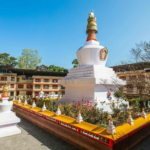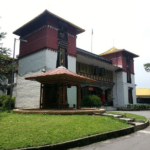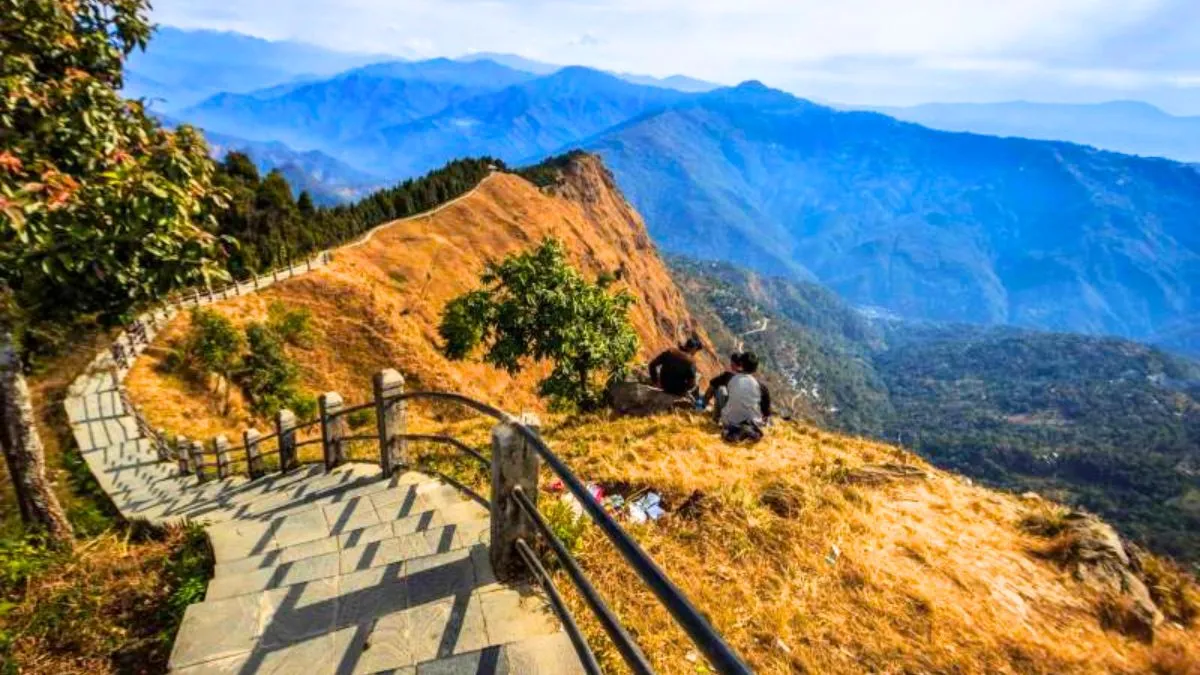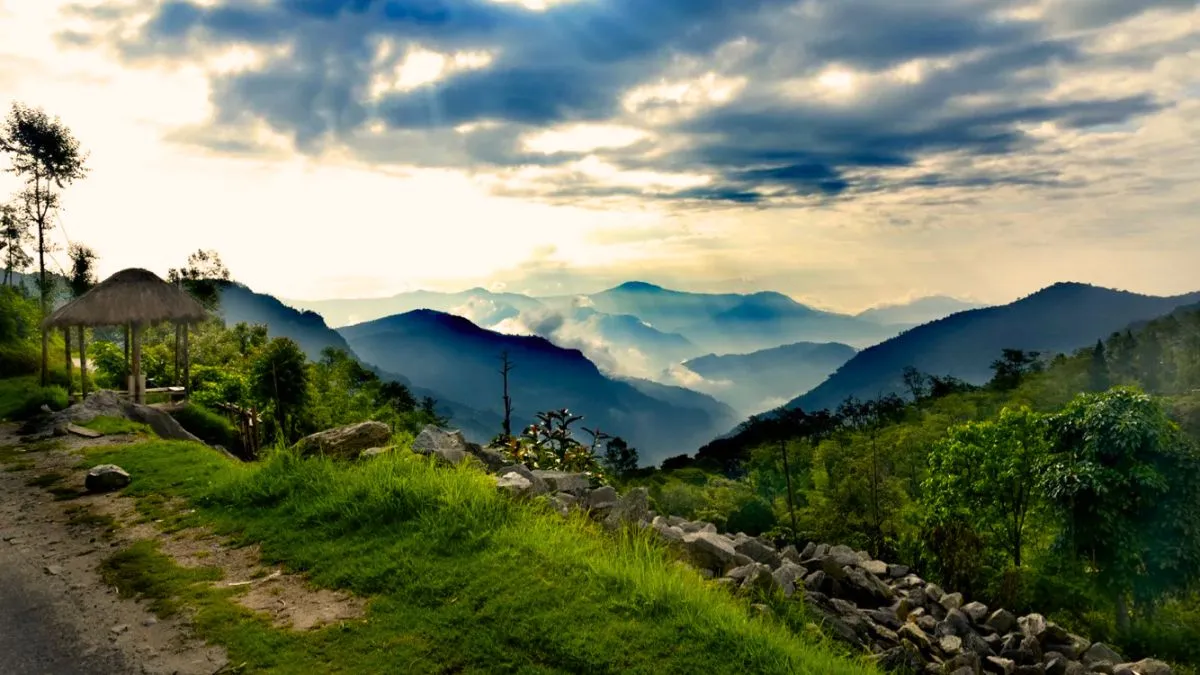Phodong Monastery, located in the beautiful state of Sikkim, offers more than just a religious experience—it takes you on a journey through centuries of Buddhist history. Built in the 18th century, this monastery holds a wealth of ancient relics, manuscripts, and murals. Visitors not only learn about Buddhism but also get to experience the rich culture of Sikkim. If you are looking for an enriching spiritual experience in 2024, Phodong Monastery should be on your travel list.
Reasons to Travel to Phodong Monastery in 2024
- Historical Significance: Phodong Monastery is one of the six major monasteries in Sikkim and plays a pivotal role in the region’s Buddhist history.
- Buddhist Art and Architecture: The intricate murals and statues offer insights into Buddhist symbolism and aesthetics.
- Cultural Experience: Visitors can witness monks performing rituals and engage with the local traditions that have been passed down for generations.
- Spiritual Exploration: Phodong is known as a place of deep spirituality, attracting those seeking mindfulness and inner peace.
- Proximity to Other Attractions: It’s located near several other key destinations in Sikkim, making it easy to explore more of the region.
Best Places to Visit Near Phodong Monastery
| Destination | Highlights |
|---|---|
| Tsomgo Lake | A high-altitude lake known for its beauty and history. |
| Rumtek Monastery | One of the largest and most important monasteries in Sikkim. |
| Yumthang Valley | Famous for its diverse range of flowers and scenic views. |
| Khangchendzonga National Park | A UNESCO World Heritage Site, known for its glaciers and biodiversity. |
| Lachung Village | A quaint village offering a glimpse into rural Sikkimese life. |
Best Time to Visit
| Season | Time of Year | Weather Conditions |
|---|---|---|
| Spring | March to May | Pleasant, ideal for exploring monasteries and natural beauty. |
| Monsoon | June to September | Heavy rains, not ideal for travel due to landslides and roadblocks. |
| Autumn | October to November | Clear skies, excellent for sightseeing and trekking. |
| Winter | December to February | Cold, but offers stunning views of snow-covered landscapes. |
Average Cost for Two People (in INR)
| Category | Estimated Cost (INR) |
|---|---|
| Travel | 8,000 – 12,000 |
| Accommodation | 5,000 – 10,000 (for 3-4 nights) |
| Food | 2,000 – 4,000 |
| Local Transport | 3,000 – 6,000 |
| Entry Fees & Miscellaneous | 1,000 – 2,000 |
| Total Estimate | 19,000 – 34,000 |
The Breathtaking Landscape of Sikkim
Sikkim is known for its towering mountains, clean rivers, and rich biodiversity. The combination of snow-clad peaks and lush forests creates a stunning backdrop that feels untouched by time. Travelers often rave about the sight of Mount Kangchenjunga, the third-highest mountain in the world, which dominates the skyline. The variety of flora and fauna is another unique aspect of Sikkim’s landscape.
Unique Aspects of Sikkim
What is the Most Beautiful Part of Sikkim?
The northern region of Sikkim, including places like Lachung, Lachen, and Yumthang Valley, is often considered the most beautiful. These areas offer spectacular mountain views, alpine forests, and serene villages. Additionally, Tsomgo Lake and Nathu La Pass are breathtaking.
Why is Sikkim So Beautiful?
Sikkim’s beauty lies in its pristine environment, its balance of mountains, forests, and rivers, and the rich cultural heritage that complements the natural beauty. The state has made significant efforts to preserve its environment and promote eco-tourism, ensuring that its landscapes remain unspoiled.
What is Sikkim’s Speciality?
Sikkim is known for its natural beauty, vibrant Buddhist culture, and organic farming. The state was declared India’s first fully organic state, making it a unique destination for eco-friendly travelers. Additionally, Sikkimese cuisine, a blend of Tibetan, Nepali, and Indian influences, is another highlight.
What is Special About Sikkim’s Culture?
Sikkim is a melting pot of Tibetan, Nepali, and indigenous Lepcha cultures. Festivals such as Losar (Tibetan New Year) and Saga Dawa (Buddha Purnima) showcase the region’s cultural richness. Monasteries play a central role in Sikkimese life, serving not just as religious centers but also as hubs for education and cultural preservation.
The Slogan of Sikkim’s Scenic Beauty
Sikkim’s tourism slogan is “Small but Beautiful,” reflecting its compact size but immense natural and cultural diversity.
Pristine Beauty of Sikkim
Sikkim’s unpolluted landscapes, whether it’s the rivers, the mountains, or the forests, offer a rare kind of beauty that feels untouched by modernity. This makes it an ideal destination for those who seek purity in nature.
Unique Flora of Sikkim
Sikkim is home to a wide range of rare and exotic plants. The state is particularly famous for its orchids, with over 600 species growing here. The Rhododendron Sanctuary in Yumthang is also a highlight, showcasing colorful blooms in spring.
Conclusion
Phodong Monastery, along with the rich landscape and cultural diversity of Sikkim, makes for a memorable journey in 2024. From the historical depth of the monastery to the unique beauty of Sikkim’s environment, this destination offers something for every traveler. For the best travel packages to Sikkim, including a guided tour of Phodong Monastery, explore options with TripFactory. We provide tailor-made packages ensuring you experience the best of Sikkim without any hassle.
Frequently Asked Question
What is the historical significance of Phodong Monastery?

Phodong Monastery is one of the six major monasteries in Sikkim, built in the 18th century. It holds ancient relics, manuscripts, and murals that provide deep insights into the region’s Buddhist history
Where is Phodong Monastery located?

Phodong Monastery is located in North Sikkim, around 28 kilometers from Gangtok, the capital city of Sikkim.
What is the best time to visit Phodong Monastery?

The best time to visit Phodong Monastery is from March to May and from October to November when the weather is pleasant and suitable for travel.
Are there any entry fees for visiting Phodong Monastery?

No, there is generally no entry fee to visit Phodong Monastery. However, it’s always advisable to check with local authorities for any updates.
What can I expect to see inside Phodong Monastery?

Inside Phodong Monastery, you can explore ancient Buddhist murals, relics, scriptures, and statues, as well as witness daily rituals performed by monks.



